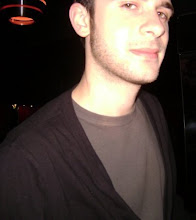With gay visibility becoming almost passé for some, media outlets decided to focus some attention on transgendered individuals, often casting them either in a normative light or playing a dual role.
This post isn't going to go in-depth in theory nor is it going to provide more than just a brief description of how transgender-identified individuals are portrayed (and subsequently made invisible in reality as their portrayals are highly inaccurate). I don't usually believe in identity-based politics, but in this case, I feel that more writing needs to be done by trans-identified people before yet another cisgendered person like me speaks on the manner.
Casting and Normalization
Trans-folk are typically cast as support and/or reoccurring characters (Ugly Betty, Dirty Sexy Money) when it comes to the sitcom genre. Like other queer characters, trans-characters are sugar-coated to be made quite digestible for a normative audience.
 Typically extremely feminine (hyperperformativity), these characters are the epitome of typically beauty. The Ugly Betty website describes its trans-character as "big brother Alex who has returned as gorgeous Alexis". This mode of thinking is dangerous as it creates a simple binary of before and after. Truth is, some transgendered folk are always in transition. Others may live their entire life with a fully male sex but identity with a female gender, genderbend, etc.
Typically extremely feminine (hyperperformativity), these characters are the epitome of typically beauty. The Ugly Betty website describes its trans-character as "big brother Alex who has returned as gorgeous Alexis". This mode of thinking is dangerous as it creates a simple binary of before and after. Truth is, some transgendered folk are always in transition. Others may live their entire life with a fully male sex but identity with a female gender, genderbend, etc.Newsweek's Depiction
This normalization is most apparent within an article Debra Rosenburg wrote. But through this normalization, Rosenburg creates a sort of monster.
To most of us, gender comes as naturally as breathing. We have no quarrel with the "M" or the "F" on our birth certificates. And, crash diets aside, we've made peace with how we want the world to see us—pants or skirt, boa or blazer, spiky heels or sneakers. But to those who consider themselves transgender, there's a disconnect between the sex they were assigned at birth and the way they see or express themselves.Those who do have problems with the "m" or "f" on their birth certificate are compared with the inability to breathe. Rosenburg also uses the term "normal", again pushing the sense of deviancy onto transgendered people.
Tolerance and Its Repercussions
The article reeks of tolerance, trying to "make sense" of this "other". Rosenburg also attributes a sense of the hyperperformativity upon those that transitioned in order to show that they are indeed now proper women (but no mention for female-to-male transitions).
Media depictions of transgenderism have a long way to go before they truly encompass the wide umbrella of the gender spectrum. Casting transgendered characters (themselves just a cisgendered female) as completely normative beings again ignores diversity of taste and opinion, all the while further demonizing those who don't conform to normative gender ideals.
Critically acclaimed transgender-themed film, Transamerica, a somewhat better example of transgender visibility.



































